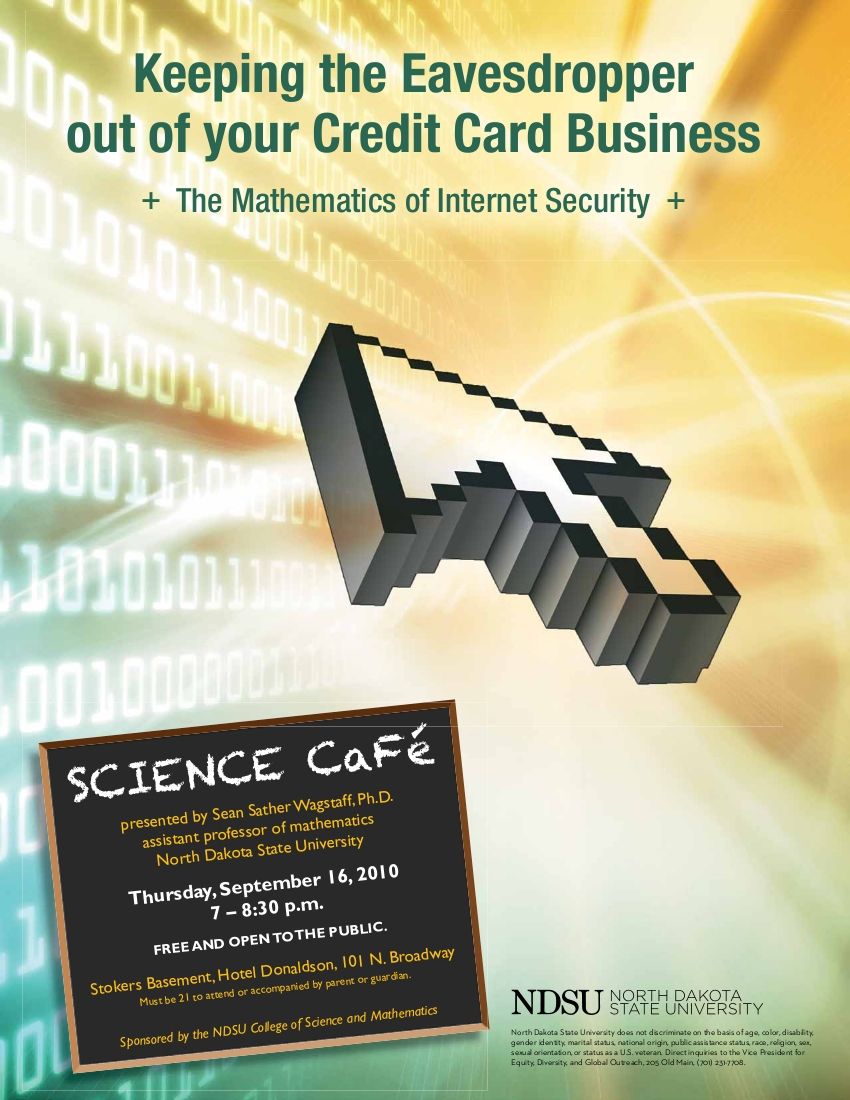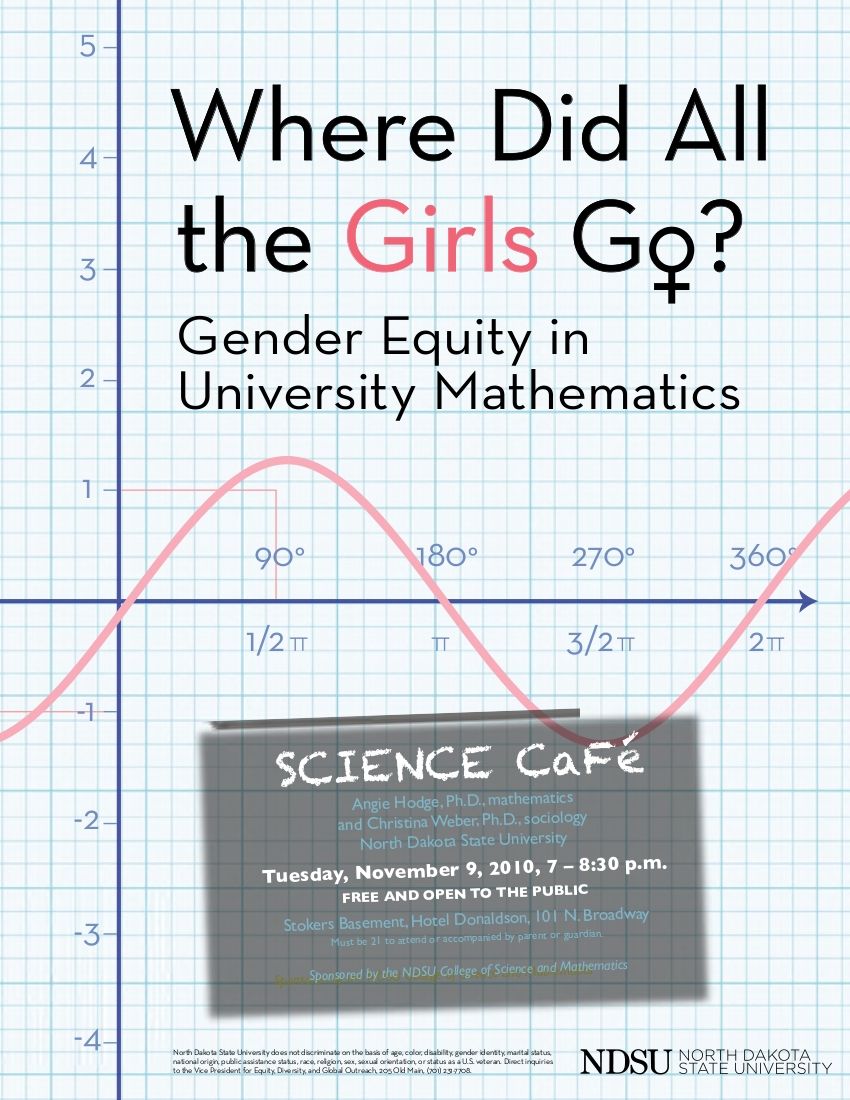
Keeping the Eavesdropper out of your Credit Card Business: The Mathematics of Internet Security
Sean Sather-Wagstaff
Department of Mathematics, North Dakota State University
In March 2010, the website amazon.com recorded over 73 million unique visitors. Many of those visitors completed transactions that involved the submission of personal data like credit card numbers and home addresses. In the age of identity theft, what makes us so confident that these data are secure? Mathematics holds the key. I will present some of the basic ideas behind the RSA encryption algorithm, named after its inventors Rivest, Shamir and Adleman. The security of RSA depends on the fact that it is computationally difficult to factor large numbers. Amazingly, the fascinating mathematics behind this algorithm is readily accessible to anyone with a basic understanding of high school algebra. Outline: 1. Fundamental notions of public-key cryptography 2. The difficulty of factoring large numbers (interactive) 3. Modular arithmetic and Fermat's little theorem (interactive) 4. RSA encryption scheme

The intimate life of Albert Einstein and his biggest idea
Daniel Kroll
Department of Physics, North Dakota State University
The General Theory of Relativity has been called "the greatest feat of human thinking about nature, the most amazing combination of philosophical penetration, physical intuition and mathematical skill." It emerged out of a frenetic period of activity by Albert Einstein and David Hilbert in late 1915. The physical insights provided by this Theory reshaped our understanding of the Universe, predicting for the first time, for example, the bending of starlight by gravity and the existence of black holes, and eventually leading to the "big bang theory". In addition to exploring several of the fascinating predictions of this theory, I will describe the series of events which led to its discovery. The latter provides fascinating insight into Einstein's personality and life.

Where did all the girls go? Gender equity in university mathematics
Angie Hodge and Christina Weber
Department of Mathematics, North Dakota State University
Despite the fact that girls are both present and succeeding in high school mathematics courses, their presence does not continue into university mathematics classrooms. What is even more problematic is that the number of women in university mathematics classes dramatically decreases over their academic careers. Why do some women fall away when others are able to persevere? In this presentation, we will discuss women’s success in mathematics and the implications of their presence and absence in the classroom. We will then discuss our research findings on the contributing factors of women’s success. Finally, we will invite discussion on the importance of parents, peers, and community involvement in women’s success in mathematics.

Emerald Ash Borer. What can we do?
Peter Oduor
Department of Geosciences, North Dakota State University
The emerald ash borer (EAB) is a very small shiny metallic green beetle. This destructive beetle will be a significant threat to the 78 million Ash trees growing in North Dakota. The EAB beetle is not native to US and hence has no known natural enemies in the US. EAB is responsible for the death or decline of tens of millions of ash trees and an ever increasing cost in treating infested trees, for example, on average it costs approximately (conservative underestimate) $700 to remove an infested tree. Most significant spread of EAB is human-induced when infested firewood is transported. No extensive studies have been done on environmental impact of treatment options especially in regions prone to flooding. This talk aims to offer an insight on spatial tools available for monitoring an EAB threat.